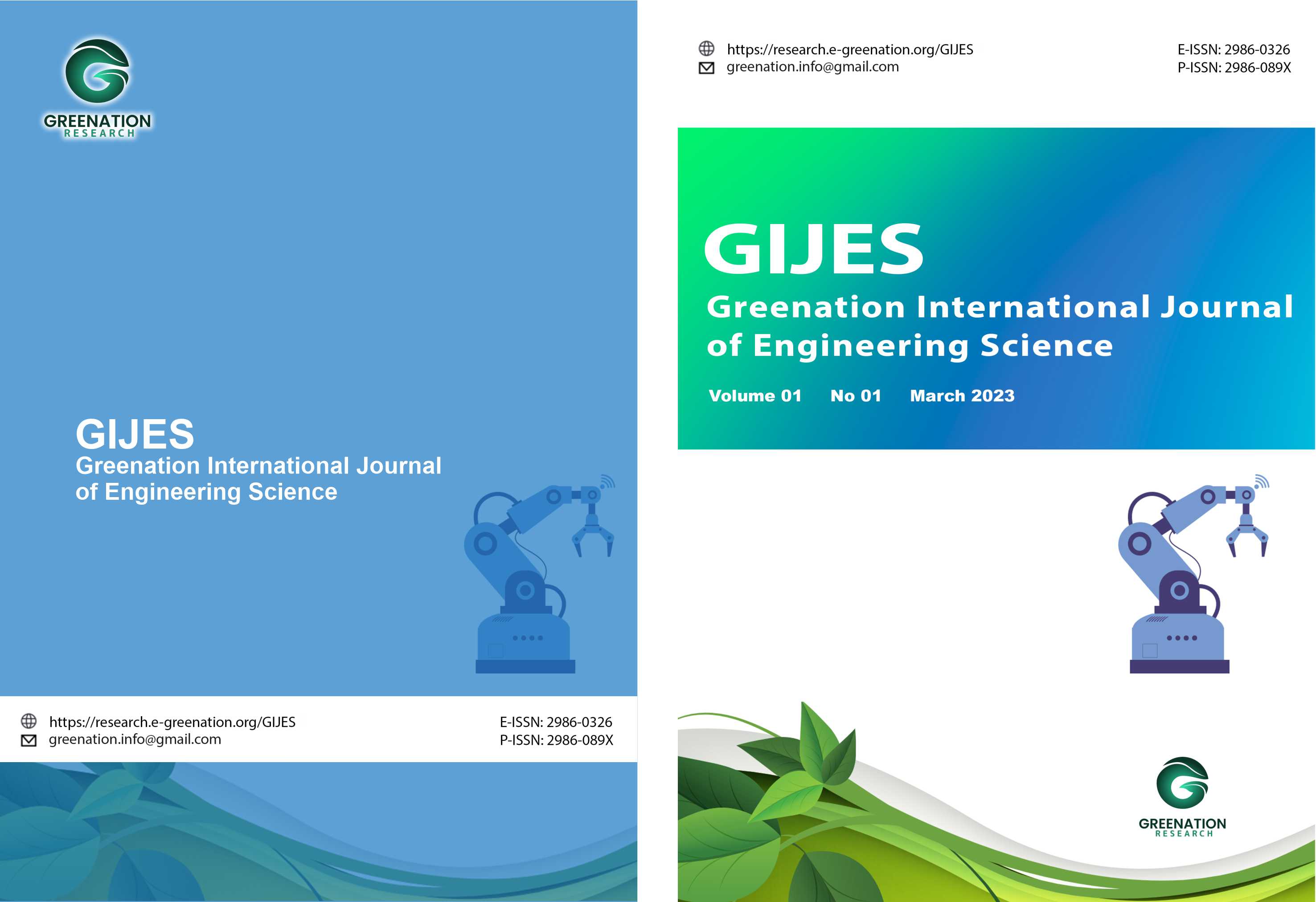Renewable Energy Integration for Cost Reduction and Academic Advancement in Nigerian Higher Education
DOI:
https://doi.org/10.38035/gijes.v3i1.531Keywords:
Renewable energy, Nigerian universities, sustainability, solar microgrids, academic advancementAbstract
Reliable energy supply is critical to the functioning of higher education, influencing teaching, research, and administrative efficiency. In Nigeria, however, universities grapple with persistent grid outages and high dependence on diesel generators, which escalate costs and undermine academic productivity. Renewable energy presents a viable alternative for addressing these challenges while advancing sustainability. This study employed a systematic review design to examine energy reliability challenges in Nigerian universities and renewable energy solutions for sustainability. Evidence was sourced from 2016–2025 publications, government reports, university audits, and donor agency documents, retrieved using databases such as Google Scholar, ScienceDirect, ResearchGate, JSTOR, and AJOL. A total of 54 relevant documents were retained after applying inclusion and exclusion criteria. Analysis followed a thematic approach, categorising evidence under diesel reliance, academic disruptions, environmental and health impacts, and renewable adoption outcomes. Findings revealed that renewable interventions, especially solar microgrids, reduce energy costs, enhance reliability, and improve academic services across universities including OAU, FUNAAB, UNIZIK, and UNILAG. The study concludes that integrating renewable energy is essential for reducing operational costs, safeguarding academic advancement, and positioning Nigerian universities as models of sustainable development.
References
Adeshina, M. A., Ogunleye, A. M., Suleiman, H. O., Yakub, A. O., Same, N. N., Suleiman, Z. A., & Huh, J. S. (2024). From potential to power: advancing Nigeria’s energy sector through renewable integration and policy reform. Sustainability, 16(20), 8803.
Adetokunbo, S. A., and Eze, P. C. (2022). Performance evaluation of evacuated?tube solar water heaters in university hostels. Journal of Solar Thermal Energy, 10(2), 110–120.
Adetunji, J. A., Olalere, A. O., and Musa, S. B. (2020). Fuel consumption and cost analysis of diesel generators in higher education institutions in Nigeria. Energy Policy and Management, 12(1), 45–58.
Akinola, R. O. (2022). Diesel offset and reliability improvements from PV–lead–acid microgrids at FUTA. Energy Reports, 8, 150–162.
Akinwale, O. A., Durojaiye, D. O., and Adeoye, O. D. (2022). Health impacts of generator emissions on university campuses in Lagos, Nigeria. Journal of Environmental Health, 19(4), 220–232.
Babatunde, O., Denwigwe, I., Oyebode, O., Ighravwe, D., Ohiaeri, A., & Babatunde, D. (2022). Assessing the use of hybrid renewable energy system with battery storage for power generation in a University in Nigeria. Environmental Science and Pollution Research, 29(3), 4291-4310.
Belhorbi, G. (2016). Electrochemical mechanisms affecting lead-acid battery life. Journal of Power Sources, 324, 45–53.
Bello, M. A., and Afolayan, A. (2022). Demand?side management of cafeteria loads using PV hybrid systems. International Journal of Energy Management, 16(3), 189–202.
BloombergNEF. (2021). Battery pack prices fall to an average of $132/kWh, but rising commodity prices start to bite. BloombergNEF.
Chen, J., Liu, Y., and Zhao, W. (2019). Energy usage modeling for university communication infrastructure. IEEE Transactions on Education, 62(4), 243–250. https://doi.org/10.1109/TE.2019.2904211
Chukwu, C. D., Ezugwu, E. J., and Okafor, M. (2022). Performance assessment of hybrid wind–PV–diesel microgrids in Nigerian universities. International Journal of Renewable Energy, 14(2), 89–101.
CIE. (2019). Guide to recommended lighting levels for educational facilities. Commission Internationale de l’Éclairage.
Dinçer, ?., and Acar, C. (2015). Smart grids and energy storage systems in academic institutions. Energy Conversion and Management, 107, 282–293.
Dinneya-Onuoha, E. (2025). Unlocking renewable energy materials in Nigeria: availability, application, and roadmap for sustainability. RSC Sustainability, 3(6), 2534-2566.
DOE. (2021). Energy savings and economics of advanced lighting controls. U.S. Department of Energy.
Esimone, C. (2023). UNIZIK Energy Audit Report 2022. Nnamdi Azikiwe University Press.
Frontiers in Energy Research. (2024). Technical, economic, and environmental feasibility of solar PV/battery systems in high-load facilities. 12, 1397037.
GIZ. (2022). Scaling solar in Nigerian institutions: FUNAAB case study. German Development Agency.
Ibrahim, M. U., Yusuf, A. A., and Olanrewaju, B. (2023). Efficiency of PV?powered DC washing machines. Solar Applications Journal, 3(1), 33–41.
IEC. (2015). IEC 60598-2-22: recessed luminaires – Particular requirements – Emergency luminaires. International Electrotechnical Commission.
Kebede, A. A., Coosemans, T., Messagie, M., Behabtu, H. A., Van Mierlo, J., and Berecibar, M. (2021). Techno-economic analysis of Li-ion and lead-acid batteries in stationary energy storage applications. Journal of Energy Storage, 40, 102748. https://doi.org/10.1016/j.est.2021.102748
Krieger, E. M., Cannarella, J., and Arnold, C. B. (2013). A comparison of lead–acid and lithium?based battery behavior and capacity fade in off?grid renewable charging applications. Energy, 60, 492–500. https://doi.org/10.1016/j.energy.2013.08.029
Kuhe, A., & Idris, M. A. (2025). Enhancing energy security and cost efficiency in Nigerian higher institutions via hybrid renewable energy systems. Discover Environment, 3(1), 1-16.
Manafa, I. F., Ohamobi, I. N., & Osegbue, G. C. (2022). Utilization of ICT resources in the management of UBE in secondary schools in Anambra State. *African Journal of Educational Management, Teaching and Entrepreneurship Studies, 3*(1), 77–86.
Mkpojiogu, E. O. (2021). Techno?economic feasibility study of solar water pumping systems in public facilities in Nigeria (Master’s thesis). Humboldt State University.
NCEE. (2023). Light-Up Anambra Masterplan Training Report. National Centre for Energy Efficiency.
OAU Energy Office. (2021). Phase I solar deployment report. Obafemi Awolowo University.
Ogunbiyi, O. T. Adewale, J. S. and Okonkwo, P. U. (2022). Solar carport installations at Covenant University. Proceedings of the Nigerian Solar Conference, 45–52.
Ohamobi, I. N., Anyaeche, I. C., Oguejiofor, C. S., Obi, I. E., & Anyaeche, I. (2024). Professional development of teachers as correlate of teachers’ job commitment in public secondary schools in Anambra State. *Journal of Higher Education Theory and Practice, 24*(2), 63–73.
Ohamobi, I. N., Manafa, I. F., & Osegbue, G. C. (2020). Curriculum implementation in secondary school on national cohesion and global competitiveness. *Journal of Contemporary Education Research, 20*(8), 30–40.
Okafor, P., and Udo, E. (2023). Incorporating carbon pricing in microgrid economic assessments: A Nigerian case study. Environmental Economics and Policy Studies, 25, 77–94.
Okoro, U. C., and Nnaji, C. G. (2021). Operational reliability challenges of campus generator sets in Nigerian universities. Journal of Facilities Management, 9(2), 98–112.
Oladipo, S. T. (2022). Economic impacts of solar adoption at OAU. International Journal of Sustainable Energy, 17(4), 210–225.
Olajide O. (2025). Ongoing Test-Run of FUNAAB’s 3MW Hybrid Solar Power. Retrieved 22/09/25 from https://goodenergysolutions.com/the-benefits-of-ground-mount-solar-systems/
Olatunji, J. A., Adekoya, A. O., and Musa, S. B. (2020). Fuel consumption and cost analysis of diesel generators in higher education institutions in Nigeria. Energy Policy and Management, 12(1), 45–58.
Osegbue, C. G., Ohamobi, I. N., & Manafa, F. I. (2018). Principals’ motivational strategies for enhancing secondary school teachers’ productivity in Anambra State. *UNIZIK Journal of Educational Management and Policy, 2*(1), 139–147.
Plett, G. L. (2015). Battery Management Systems, Volume I: Battery Modeling. Artech House.
Proenza, E., Sharaf, M., and El?Khoury, R. (2020). Cycling performance of LiFePO? cells under tropical temperatures. Journal of Power Sources, 450, 227677. https://doi.org/10.1016/j.jpowsour.2019.227677
REN21. (2024). Renewables 2024 Global Status Report. REN21 Secretariat.
Royalstar Energy Systems. (2021, December 26). PV Diesel Hybrid System Solution. Royalstar Energy Systems. https://royalstar.com.tr/en/pv-diesel-hybrid-system-controller/
Saha, K., Sontheimer, E.J., Brooks, P.J., Dwinell, M.R., Gersbach, C.A., Liu, D.R., Murray, S.A., Tsai, S.Q., Wilson, R.C., Anderson, D.G. and Asokan, A., (2021). The NIH somatic cell genome editing program. Nature, 592(7853), pp.195-204.
Samuel, O., Baba, M., & Thlimabari, A. (2018). The Ecological, Economical and Social Impact of Adopting Solar Cooking in Mubi Metropolis Adamawa State, Nigeria. Journal of Scientific Research and Reports, 1-6.
Sanni Timilehin, F., Ayobami, O., Ademola, A., & Gideon, A. (2019). Renewable Energy Towards a Sustainable Power Supply in the Nigerian Power Industry: Covenant University as a Case Study. SSRN.
Sobamowo, G. M., Ewansiha, A. G., Ojuro, J. N., Jemiseye, A. E., and Fawumi, R. O. (2024). Solar power applications and integration of LiFePO? batteries in off-grid PV systems. Renewable Energy Integration Journal, 2(1), 10–25.
UNIZIK Facilities Management. (2022). Generator Maintenance and Failure Report. Nnamdi Azikiwe University Facilities Management Department.
UNIZIK Finance Office. (2024). Solar Plant Revenue and Cost Report. Nnamdi Azikiwe University.
UNIZIK Health Services. (2023). Annual Environmental Health Surveillance Report. Nnamdi Azikiwe University Health Services Directorate.
UNIZIK Library Services. (2023). Digital archives power continuity study. Nnamdi Azikiwe University.
UNIZIK Student Affairs. (2023). Hostel energy autonomy pilot evaluation. Nnamdi Azikiwe University.
Zahid, S., Li, J., and Wang, M. (2022). Effects of including salvage values in life-cycle cost analysis of battery storage. Applied Energy, 325, 119819.
Zhang, S., Andrews-Speed, P., Zhao, X. and He, Y. (2013). Interactions Between Renewable Energy Policy and Renewable Energy Industrial Policy: A Critical Analysis of China's Policy Approach to Renewable Energies. Energy Policy, 62, 342–353.
Downloads
Published
How to Cite
Issue
Section
License
Copyright (c) 2025 Obiora Jeremiah Obiafudo, Callistus Nkemjika Chukwu, Tochukwu Josiah Uche, Collins Kosi Nzelu, Johnbosco Chiemerie Chukwunenyem

This work is licensed under a Creative Commons Attribution 4.0 International License.
Copyright:
Authors who publish their manuscripts in this journal agree to the following conditions:
- Copyright in each article belongs to the author.
- The author acknowledges that Greenation International Journal of Engineering Science (GIJES) has the right to be the first to publish under a Creative Commons Attribution 4.0 International license (Attribution 4.0 International CC BY 4.0).
- Authors can submit articles separately, arrange the distribution of non-exclusive manuscripts that have been published in this journal to other versions (for example, sent to the author's institutional repository, publication in books, etc.), acknowledging that the manuscript has been published for the first time in GIJES.

























